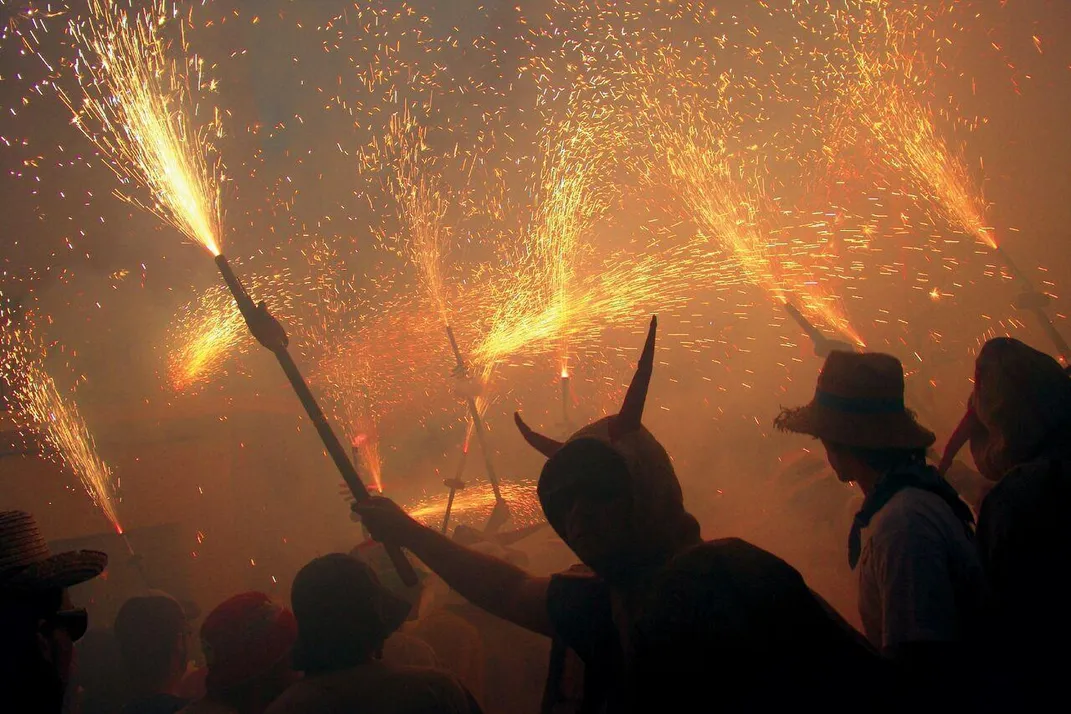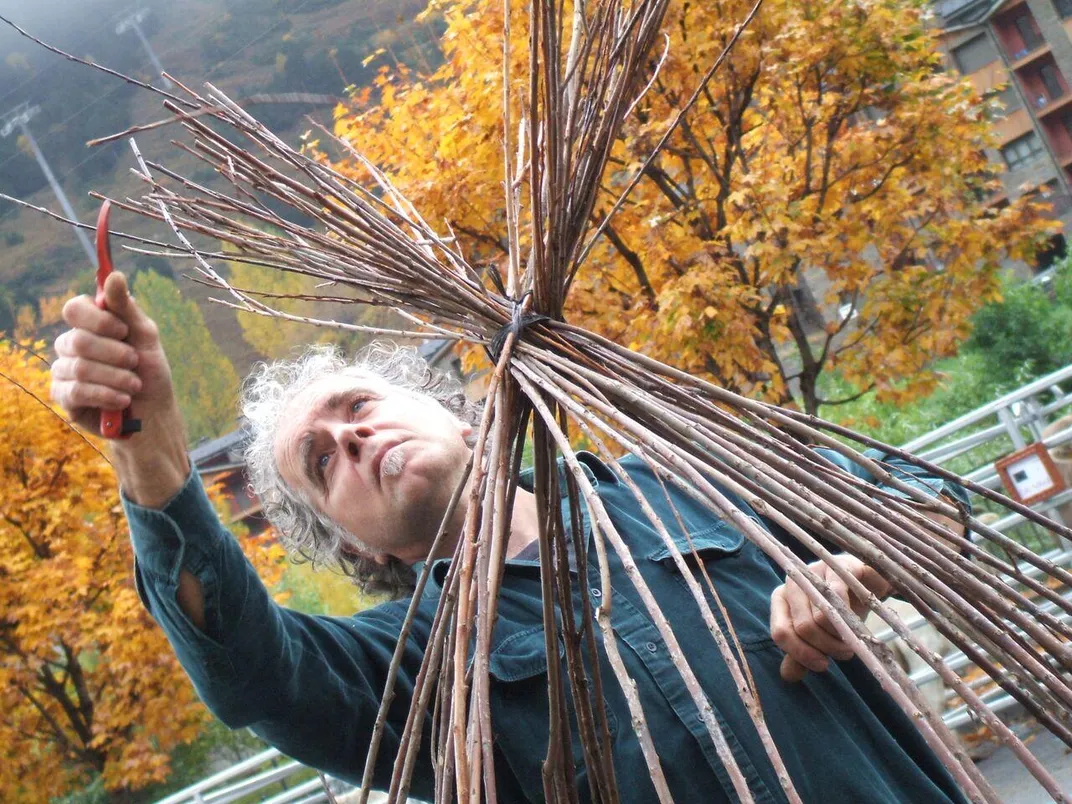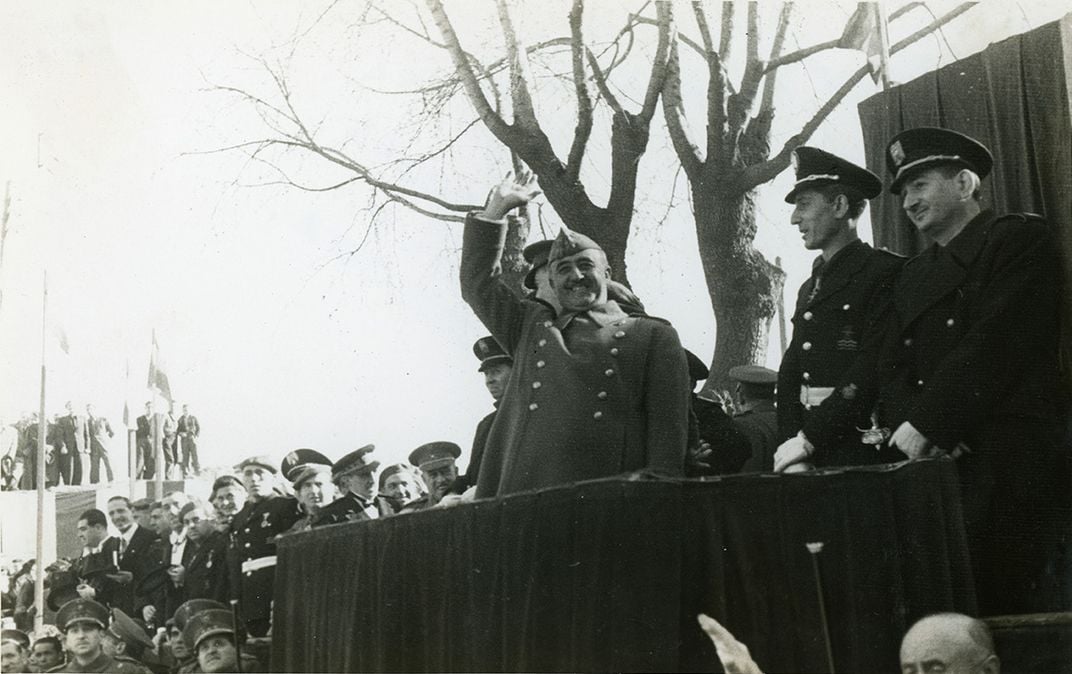Beyond the Headlines, Catalan Culture Has a Long History of Vibrancy and Staying Power
The autonomous Spanish region of Catalonia takes center stage at this summer’s Smithsonian Folklife Festival
/https://tf-cmsv2-smithsonianmag-media.s3.amazonaws.com/filer/b2/71/b27105bf-375d-4a39-ab98-f610d8b048fe/human_towers.jpg)
Despite more than a thousand years of political flux in the region, Catalonia has long maintained its own unique cultural and linguistic tradition. Located in the northeastern Iberian Peninsula by the Mediterranean Sea and the Pyrenees mountains, Catalonia is an autonomous region of Spain. It is a land of many contradictory facets: it is united politically with the Spanish government in Madrid, sharing its laws, income and infrastructure, but at the same time it maintains a vibrant regional identity.
Catalan traditions, including its festivals, sports, dance and language, have a long history of cultural relevance in the region. However, over the years, repressive political movements—such as the 20th-century dictatorship of General Francisco Franco—have made the practice of these traditions contentious and even dangerous. Non-governmental organizations that strive to preserve Catalan regional culture even as it becomes politicized do yeoman’s work to keep the Catalan identity alive. Their work is especially important in the current era, as Catalonia’s reinvigorated push for independence has driven heightened tension between citizens of the region and the central Spanish government in Madrid.
This month, dozens of artisans, musicians, chefs and others will be coming to Washington, D.C. to showcase the Catalan culture at the Smithsonian’s annual Folklife Festival on the National Mall. The ten-day exhibition, "Catalonia: Tradition and Creativity from the Mediterranean" will include dance performances, demonstrations of Catalan human tower teams, workshops with artisans and even traditional fireworks, and aims to recreate the Catalan tradition of living harmoniously in public spaces.
According to Michael Atwood Mason, the director of the Smithsonian Center for Folklife and Cultural Heritage, the focus on Catalonia at this year’s Festival transcends the political controversy over the region to display a truly rich and precious culture. “Historically, Catalan identity has been subjected to all kinds of pressures from outside—that goes back hundreds of years,” says Mason, who co-curated the Catalonia program along with Cristina Díaz-Carrera and David Ibáñez. “At the festival, we move beyond headlines, beyond the political pushing and shoving to talk about the way people live together, the way they share public space,” says Mason.
The region’s political history dates to the medieval period, but the uniqueness of the Catalan cultural identity, and its steadfastness even in the face of repression, has persisted for centuries. Below, after conversations with Mason and Joan Ramon Resina, a professor of Iberian and Latin American Cultures at Stanford University, we answer four important questions about the historical and cultural context of Catalonia.

When did Catalonia first emerge?
The first political organization in the Catalan region, says Resina, began during the Roman Empire. The Romans seized Catalonia from native tribes and centralized their regional power in Tarraco, today's Tarragona, around 220 BCE. The people of Catalonia were granted Roman citizenship, and under Roman rule, infrastructure and agriculture in the region flourished.
Toward the end of the Roman Empire, other groups came from the east to take control of Catalonia; the Visigoths ruled over the region from the 5th to the 8th-centuries, after which the expanding Frankish Empire under Charlemagne annexed much of the area. At the end of the 8th century, Charlemagne established the first Catalan counties, centered on fortresses at the edge of the Muslim-ruled Iberian peninsula. In time, these counties became towns and centers of power, which were unified in 1162 under the name of Catalonia. One of these counties was Barcelona, which became a strong political ward despite its feudal dependence on the Central European emperor.
According to Resina, the changing imperial rule over Catalonia during late antiquity and the early Middle Ages underscores the current distinctness that Catalans feel from the rest of Spain. “On the origins of Catalonia, it bears saying that it had nothing at all to do with the western Iberian Peninsula,” he says, emphasizing the central and eastern European forces that drew Catalonia into their realm as a far-west territory.
Following Charlemagne’s death, the counts designated by the empire to rule over Catalonia became increasingly independent from the centralized power. The region eventually formed a confederacy with the neighboring kingdom of Aragon. And when Queen Isabella of Castile and King Ferdinand of Aragon married in 1469, the Iberian peninsula regions were starting to move towards a unified Spain.
Catalonia, says Resina, remained a tangential territory of Spain even after the marriage. “At the time, the Spanish empire included many other territories: in America and in Europe with Italy and the Netherlands, and Catalonia was just one more territory just as the Netherlands were,” he says.

Why do some Catalonians see themselves as independent from Spain?
Catalonia’s identity remained distinct from other regions of Spain, with their separate language and history, but various attempts both to assimilate the region and to grant it independence have ebbed and flowed over the years. As the Spanish Empire grew in power and influence during the 16th and early 17th centuries, Catalonia maintained its own separate political institutions. Resina notes that at the time, Catalonia was not governed by Castillian laws, and the king of Spain had to negotiate with the Catalan court each year to receive tax revenue from the region.
However, by the 18th century, more political unrest in the region led to increased unification pressures. The Habsburgs of Austria and the Bourbons of France sparred over control of the Spanish monarchy, and in their support of the Habsburgs, Catalonia ended up backing the wrong horse. After the Siege of Barcelona ended in 1714, the Bourbons unified the disparate Spanish territories under King Philip V, banning Catalan political institutions and seeking to erase the Catalan language from the government, literature and culture. Though the Catalan economy flourished, their language and culture became a subject of political controversy for the first time.
“The Bourbon rule gives a clue as to why Spain is still today a problematic nation that cannot cohere,” says Resina. “Everything that follows was based upon the period of subjection by military force of these peoples, mostly the Catalans. So they revolt every so often, but the underlying issues were never resolved.”

What happened after the Spanish Civil War?
The pattern of Catalonia supporting a losing side in a war, and paying through the nose for it, continued as right-wing fascist forces under the direction of General Francisco Franco sought to usurp the sitting Republican government in 1936. The Republican government had treated Catalonia favorably, granting semi-autonomous status in 1931, and Catalonia became a left wing stronghold during the bloody three-year conflict. When the fascists defeated the Republicans and installed Franco as the Spanish dictator in 1939, the nationalist government sought to unify Spain—and punish Catalonia for their wartime opposition—by wiping out Catalan language and culture altogether.
Catalonia was not alone in its targeted status under Spain’s fascist regime. Franco’s effort to unify Spain under one nationalist identity resulted in hostility toward Catalonia and the Basque Country, whose statues of autonomy he repealed before the war was over. The fascists' attempt to transform Spain from a country of unparalleled regional diversity into a more culturally homogeneous nation-state resulted in grievous repression and violence in some of Spain's autonomous regions.
“Plenty of Catalans adapted quickly to the Francoist regime, but as Catalans, in terms of their language, culture and history, all of them were ground down and repressed,” says Resina. “The repression went so far as to include not only the language itself, but also every single very minor aspect of the Catalan culture: music, song, cultural references, the names of people, writers and composers. There was a very thorough erasure of anything Catalonia looked like before the war.”
The most repressive years of the dictatorship, from the Catalan perspective, came at the beginning of Franco’s regime. During the early 1940s, many significant cultural figures went into exile, and civilians could be punished for speaking their native Catalan language in public spaces. Resina recounts an exceptionally severe case in which a military officer asked a Catalan man for directions, and when the man responded in Catalan, the officer shot him in the head.
“The repression was brutal and extreme, until the Allies won the war against Hitler and Mussolini in Europe,” says Resina. “At that point, Franco realized, ‘Now, they may come for me.’”
After the end of the second World War, Franco gradually began to relent in his repression of Catalan culture. By the 1960s, the state had begun allowing publications in Catalan, and Catalan music and theater began to make a modest comeback despite persistent censorship. The country’s eventual transition back to democracy in the late 1970s aided in the rebuilding of Catalan culture, but the process continued to be slow and gradual.
How are Catalans restoring their unique language and culture today?
Recent years have brought a new wave of Catalan cultural restoration, as the region tries to reclaim its individual identity after decades of repression. According to Michael Mason, local associations have united diverse communities of Catalan people under the common goal of preserving the language and traditions that have defined the region for centuries.
“If you went to a restaurant in Barcelona 15 years ago, people would first speak to you in Castilian. Now, they first speak to you in Catalan. There is a real sense that people have become a little more secure in being Catalan,” says Mason. “There’s a self-conscious effort to make sure that people maintain their sense of who they are.”
Along with the restoration of the Catalan language, which is now the primary language taught in most public schools, local organizations have revived previously repressed traditions such as traditional feast days filled with Catalan food and dance performances, masquerades and even the region’s human tower teams. This latter tradition presents quite the spectacle, as teams of more than a hundred Catalans balance human bodies atop each other to build a human tower, or castell.
While the traditions that the organizations are trying to restore have been around for hundreds of years, Catalonia looks very different from how it did in the past. The region calls itself a pais d’acollida, or a “welcoming country,” a notion it steadfastly honors even in the face of today’s ongoing massive global migrations. The region’s immigrants made up just 3 percent of the population in 2000, but have swelled in recent years to about 14 percent in 2017.
Mason says that the changing demographics of Catalonia actually have strengthened efforts to restore Catalan culture, as these cultural organizations directly reach out to immigrants as they recruit new members. “Incorporating newcomers into these culturally-oriented associations or NGOs is one strategy they have for making sure that newcomers aren’t isolated from other Catalans,” he says. “It has been a major vehicle for social integration.”
As the population of Catalonia changes, their political situation also remains in flux. After a controversial referendum in October of 2017, in which Catalans voted in favor of independence though the Spanish government had declared the vote illegal, the region has been involved in a constitutional fight with the Spanish government over their right to separate. Eight months later, they are still engaged in constitutional deadlock with Madrid, with a newly-elected government recently promising to continue the fight.
If history is any indication, tumultuous political times in Catalonia are the ones that are most threatening to the preservation of Catalan culture. But Catalonia’s demonstrated commitment in recent years to actively promoting their language and culture in their public spaces sheds an optimistic light on their cultural future.
The Smithsonian Folklife Festival takes place on the National Mall in Washington, D.C., June 27 to July 1, and July 4 to July 8, 2018. Featured programs are "Catalonia: Tradition and Creativity from the Mediterranean" and "Armenia: Creating Home."
Editors' Note, June 28,2018: This article has been updated with a few corrections and clarifications. The king of Spain negotiated with the Catalan court not a king. Catalonia joined in a confederacy with the kingdom of Aragon, it did not become a part of it. The article has also been updated to clarify that not all Catalonians seek independence from Spain.